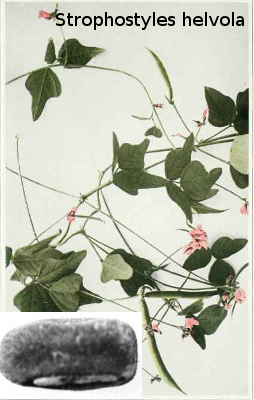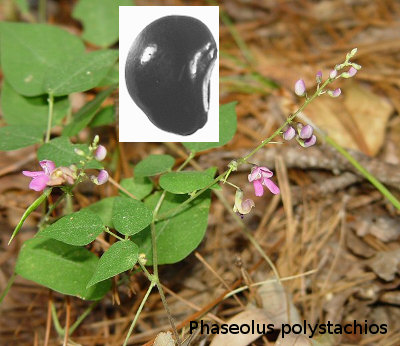
Gardening tips from the Native Americans
 Now
that I've finally answered my question about what eastern Native
American food looked like before corn dominated their fields, I can
start to tease permaculture implications out of the information.
First of all, the intricate layering
(trees planted above vines above
shrubs above groundcovers) often focused on by forest gardening
fans
seems to be more of a tropical and semi-tropical concept, and I suspect
we just don't have enough sunlight in our temperate climate to make
layering work well. I
don't think it's just coincidence that the Native Americans from our
area used techniques that basically turned their wild food tree systems
into
orchards by burning and clearing out the undergrowth.
Instead, it sounds like the admonition in Edible
Forest Gardens
to give your trees lots of space and diversify horizontally (a grape
vine just beyond the canopy of your apple tree, for example) rather
than vertically
is more appropriate for our climate. Those of you who live in
zone 8 or warmer are more likely to be successful with the vertical
layering advocated in earlier forest gardening books.
Now
that I've finally answered my question about what eastern Native
American food looked like before corn dominated their fields, I can
start to tease permaculture implications out of the information.
First of all, the intricate layering
(trees planted above vines above
shrubs above groundcovers) often focused on by forest gardening
fans
seems to be more of a tropical and semi-tropical concept, and I suspect
we just don't have enough sunlight in our temperate climate to make
layering work well. I
don't think it's just coincidence that the Native Americans from our
area used techniques that basically turned their wild food tree systems
into
orchards by burning and clearing out the undergrowth.
Instead, it sounds like the admonition in Edible
Forest Gardens
to give your trees lots of space and diversify horizontally (a grape
vine just beyond the canopy of your apple tree, for example) rather
than vertically
is more appropriate for our climate. Those of you who live in
zone 8 or warmer are more likely to be successful with the vertical
layering advocated in earlier forest gardening books.
 I also see implications for
the chicken pasture in the ten thousand
years of research carried out by the Native Americans. Perhaps
the food plants that were simply encouraged by the Native Americans
rather
than domesticated and planted can fit into our chicken pasture
scheme? I'm especially interested in the small, weedy species
that like disturbance and are also edible, like the wild beans, maypop,
black nightshade, amaranth,
pokeweed, carpetweed,
dock, chickweed, ground cherry, purslane, carpetweed, panicgrass, and
spurge. Black
nightshade and chickweed sprang up naturally in our chicken pasture
last year and were two of the chickens' favorite natural foods, so
the idea probably has some merit. It sounds like I've got my work
cut out for me in 2011, gathering weeds to test them on the chickens.
I also see implications for
the chicken pasture in the ten thousand
years of research carried out by the Native Americans. Perhaps
the food plants that were simply encouraged by the Native Americans
rather
than domesticated and planted can fit into our chicken pasture
scheme? I'm especially interested in the small, weedy species
that like disturbance and are also edible, like the wild beans, maypop,
black nightshade, amaranth,
pokeweed, carpetweed,
dock, chickweed, ground cherry, purslane, carpetweed, panicgrass, and
spurge. Black
nightshade and chickweed sprang up naturally in our chicken pasture
last year and were two of the chickens' favorite natural foods, so
the idea probably has some merit. It sounds like I've got my work
cut out for me in 2011, gathering weeds to test them on the chickens.
| This post is part of our Native American Paleoethnobotany lunchtime
series.
Read all of the entries: |
Want more in-depth information? Browse through our books.
Or explore more posts by date or by subject.
About us: Anna Hess and Mark Hamilton spent over a decade living self-sufficiently in the mountains of Virginia before moving north to start over from scratch in the foothills of Ohio. They've experimented with permaculture, no-till gardening, trailersteading, home-based microbusinesses and much more, writing about their adventures in both blogs and books.
Want to be notified when new comments are posted on this page? Click on the RSS button after you add a comment to subscribe to the comment feed, or simply check the box beside "email replies to me" while writing your comment.
